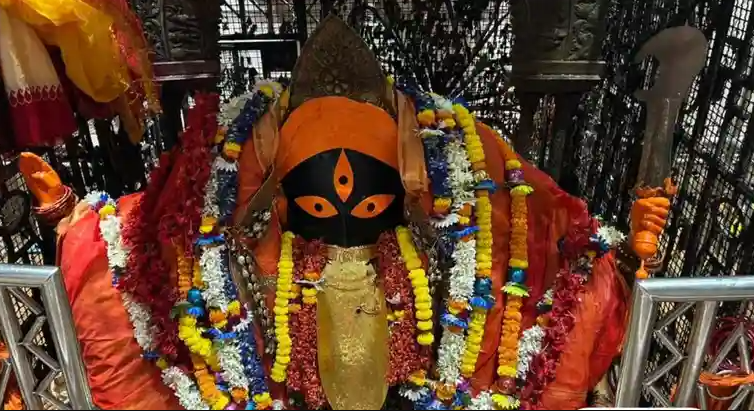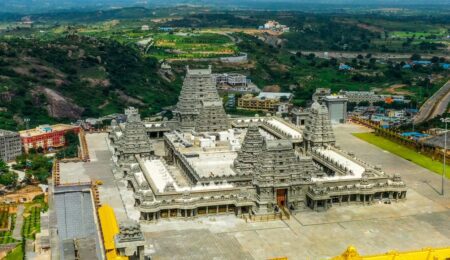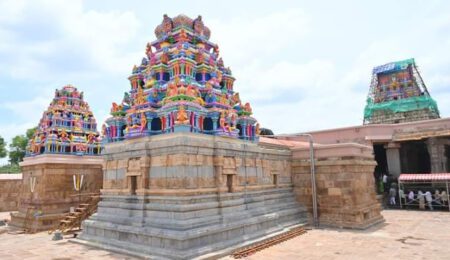Kalighat Temple Kolkata: A Divine Legacy of Faith, Culture, and Heritage
The Kalighat Temple in Kolkata, one of the most sacred and revered temples in India, is not just a place of worship it is a confluence of mythology, spirituality, history, and cultural vibrancy. Dedicated to Goddess Kali, this temple is an integral part of the Shakti Peethas and holds immense significance for devotees and historians alike. In this comprehensive article, we will explore every facet of Kalighat Temple Kolkata, from its divine origins to its influence on the cultural fabric of the city.
Origins of Kalighat Temple Kolkata
The origins of the Kalighat Kali Temple Kolkata trace back several centuries. It is believed to be over 200 years old in its current structure, but the shrine’s history spans far beyond that. According to Hindu mythology, Kalighat is one of the 51 Shakti Peethas sacred places where the body parts of Goddess Sati fell when Lord Shiva carried her charred body after her self-immolation. Specifically, the right toe of Sati is said to have fallen at Kalighat in Kolkata.
The Legend of Kalighat
Kalighat in Kolkata derives its name from the combination of “Kali” and “Ghat” the landing steps or banks of a river. The temple was originally situated on the banks of the Adi Ganga, a tributary of the Hooghly River. Over the centuries, the river’s course changed, but the sanctity of the site remained intact.
It is said that the idol of Goddess Kali enshrined in the Kalighat Temple Kolkata was discovered by a devotee named Brahmananda Giri in the 16th century. The idol was originally worshipped in the open air until the present temple structure was built by the Sabarna Roy Chowdhury family in the early 19th century.
Architecture and Structure of Kalighat Kali Temple Kolkata
The architectural style of the Kalighat Kali Temple Kolkata reflects the traditional Bengali style. The temple features a distinctive ‘natmandir’ (hall for congregational worship), a sanctum sanctorum housing the idol of Goddess Kali, and a separate area for offerings. The temple complex also includes smaller shrines dedicated to other deities.
The idol of Goddess Kali at Kalighat is unique in its depiction. Unlike the typical representations, the Kalighat idol has three huge eyes, a long protruding tongue made of gold, and four arms made of silver. The idol is made of black stone and is adorned with gold and silver jewelry.
Religious Significance of Kalighat West Bengal
Kalighat West Bengal is not just a temple—it is a spiritual epicenter. Thousands of devotees visit the temple daily, especially on Tuesdays and Saturdays, which are considered auspicious for worshipping Goddess Kali. During festivals like Kali Puja and Diwali, the temple witnesses an overwhelming footfall of devotees from across the globe.
The Kalighat Kali Temple Kolkata is also a place where devotees perform rituals for the departed souls. It is believed that offering prayers here helps in attaining salvation for ancestors. The temple priests, known as ‘sevaits’, conduct rituals as per ancient traditions passed down through generations.
Festivals Celebrated at Kali Ghat Kali Mandir
The most significant festival at Kali Ghat Kali Mandir is Kali Puja, celebrated with grandeur and devotion. This festival coincides with Diwali and attracts a massive crowd. The temple is decorated with lights, flowers, and garlands, and the atmosphere becomes electric with the chanting of hymns and devotional songs.
Other important festivals include:
- Durga Puja: Though primarily dedicated to Goddess Durga, the celebrations extend to Goddess Kali.
- Navratri: Nine nights of divine worship, leading up to Vijayadashami.
- Poila Boishakh: Bengali New Year, when devotees seek blessings for prosperity.
- Purnima and Amavasya: Monthly observances that draw special rituals and gatherings.
Cultural and Historical Importance
Kalighat in Kolkata has inspired numerous works of art, literature, and music. The famous “Kalighat paintings” originated from the vicinity of the temple. These folk paintings are known for their bold colors, satirical themes, and social commentary.
Kalighat has also been a muse for several Bengali poets and authors. Rabindranath Tagore, Bankim Chandra Chattopadhyay, and other literary stalwarts have mentioned the temple in their works. The temple area is often depicted in Bengali cinema and television, reflecting its deep-rooted cultural significance.
Kalighat and Social Reform
Interestingly, Kalighat West Bengal has also been a center for social reform. In the 19th century, reformers like Raja Ram Mohan Roy and Ishwar Chandra Vidyasagar used the spiritual significance of Kalighat to advocate against social evils like sati and child marriage. They believed in blending tradition with modernity and used the religious influence of the temple to effect positive change.
Visiting Kalighat Temple Kolkata: A Guide for Pilgrims
If you are planning to visit the Kalighat Kali Temple Kolkata, here are some essential tips:
How to Reach:
- By Air: The nearest airport is Netaji Subhas Chandra Bose International Airport.
- By Train: Kolkata has major railway stations like Howrah and Sealdah, which are well-connected.
- By Metro: The Kalighat Metro Station is the closest metro point.
- By Road: Taxis, auto-rickshaws, and buses ply regularly to Kalighat.
Temple Timings:
- Morning: 5:00 AM to 2:00 PM
- Evening: 5:00 PM to 10:30 PM
- Best Time to Visit: Early morning or late evening to avoid heavy crowds.
Dress Code:
- Traditional attire is recommended. Avoid wearing revealing clothes as the temple maintains a conservative environment.
Things to Keep in Mind:
- Photography inside the temple is strictly prohibited.
- Beware of touts or agents who may try to exploit tourists.
- Offerings such as flowers, sweets, and sarees are available near the temple.
Kalighat’s Role in Modern Kolkata
Kalighat in Kolkata is not just a religious landmark—it is a thriving ecosystem. The area surrounding the temple is bustling with shops, eateries, and local businesses. From offering puja items to selling handicrafts and souvenirs, the temple supports the local economy.
Kalighat is also a melting pot of people from various backgrounds and regions. It reflects the inclusive spirit of Kolkata—a city that seamlessly blends the sacred and the secular.
Preservation and Renovation
Over the years, efforts have been made to preserve and restore the Kalighat Kali Temple Kolkata. Various government and non-government organizations have stepped in to maintain cleanliness, enhance security, and improve facilities for pilgrims. The temple administration has also digitized donation processes and introduced crowd management systems during peak times.
Kalighat in Literature and Pop Culture
The mystique of Kalighat West Bengal has found its way into novels, poems, and films. It has been referenced in:
- “City of Joy” by Dominique Lapierre
- Satyajit Ray’s Films: Known for capturing the ethos of Kolkata
- Bengali TV Serials: Often use Kalighat as a setting for dramatic sequences
These cultural depictions further deepen the public’s connection with the temple.
Why Kalighat Temple is a Must-Visit
If you are a spiritual seeker, a cultural enthusiast, or a history buff, visiting Kalighat Temple Kolkata is an experience of a lifetime. The aura, the chants, the sacred rituals, and the sheer energy of the place leave a lasting impression.
Here, devotion transcends boundaries. Whether you’re a local resident or an international tourist, the divine presence at Kalighat will touch your soul.




Leave a Comment